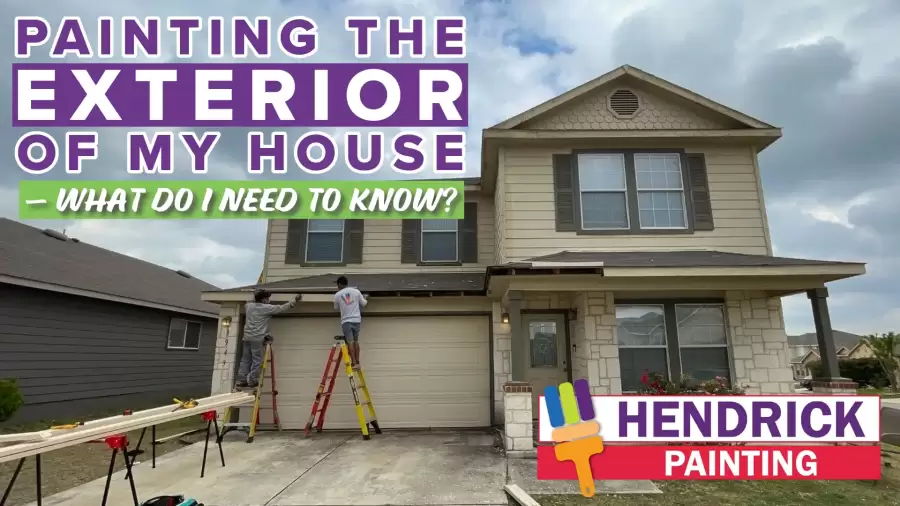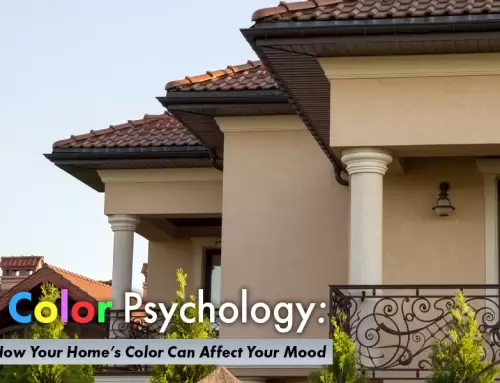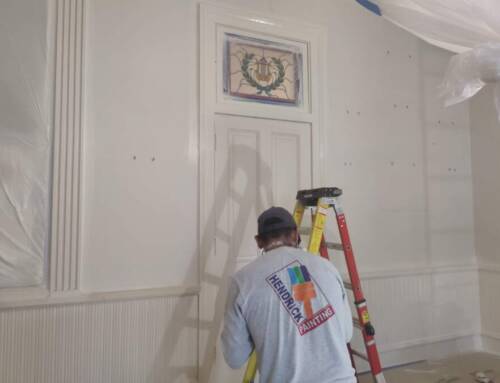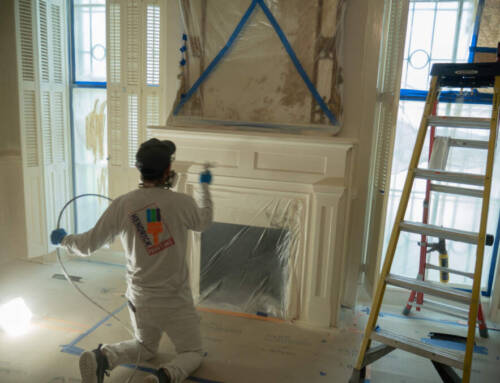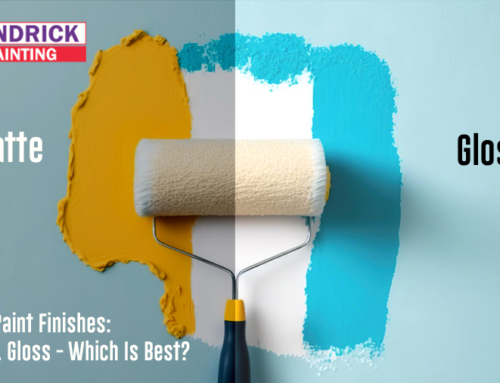THE HOMEOWNER’S GUIDE TO EXTERIOR PAINTING
If you have been researching this topic for any reasonable period, then you have likely come across a litany of articles discussing the cost to paint your home exterior. If that’s what you came to this blog for, you may as well move along now. We still plan to discuss that aspect; however, our main focus will be on highlighting what goes into a successful exterior painting project. Our goal is to provide homeowners with – education. Knowledge leads to wiser decisions. Wiser decisions lead to cost savings.
 Naturally, price is the first thing we all think about. After all, it is wise to determine if you have enough in your budget to finish a project – before you begin. In San Antonio and the surrounding area, the estimates that HomeAdvisor provides on their website are more or less accurate. The National Average is $3,049; and a low-end to high-end cost of $600 to $7,000. If you click the link above, they go on to explain the difference between the square footage of your living space and the actual paintable surface. As well as the effect that height and access have on labor costs. So, if you just want to know about pricing, check out the link above.
Naturally, price is the first thing we all think about. After all, it is wise to determine if you have enough in your budget to finish a project – before you begin. In San Antonio and the surrounding area, the estimates that HomeAdvisor provides on their website are more or less accurate. The National Average is $3,049; and a low-end to high-end cost of $600 to $7,000. If you click the link above, they go on to explain the difference between the square footage of your living space and the actual paintable surface. As well as the effect that height and access have on labor costs. So, if you just want to know about pricing, check out the link above.
Shifting our focus to the details behind the numbers, we will begin by asking: why do you want to paint your home?
Are you looking to sell your home and are concerned with its curb appeal? Are you planning to remain in the home and are tired of looking at the same color? Is it more a matter of home maintenance and protecting your investment? These are very different goals with potentially different solutions. Your goal, then, will greatly impact the overall scope of your project and the cost. In this article we will discuss the factors that apply to those specific objectives. We will also discuss the elements that apply to all successful painting projects.

IF YOUR GOAL IS TO SELL YOUR HOME
In this scenario, value for money is the objective. You want to make the home more appealing to buyers, without over-investing. So, what should your focus be? The simple answer is – repairs. Repairs to the exterior fascia, soffits, siding, and windows. Wait! Why not painting? In the long run, spending most of the budget on repairs is a better investment. After repairs, there may not be enough left in the budget for painting the whole house. You may need to just color-match the existing paint and touch up the repaired areas. Often the buyer will change the colors later anyway, in which case the touch-ups would matter less to them.
Why is this a better approach than painting and masking defects? If rotting wood, large holes, peeling paint, loose or warped trim, and other issues exist, painting them will not hide them from all homebuyers. If the house doesn’t sell as quickly as you expect, you may have to invest in patching it up again. Not to mention, if a homebuyer does notice it before closing, they may request the repairs be made before finalizing the sale anyway.
The repairs add real value to the home and can eliminate any wrinkles in negotiating the price.
Ideally though, if you maintained the home regularly while living there, the repairs should be minor enough. If you don’t have enough to paint the entire house, focus on the features of the home that are street-facing or would be most noticeable when doing a walkaround. Examples of this would be the entire front of the house (if possible), the front door, the porch – including the ceiling, garage doors and trim, and any protruding bay windows or other unique features of the house.
Pressure washing to remove dust or dirt buildup should be done whether you paint. It will make a big difference in the home’s appearance! This also provides clean surfaces to areas requiring caulk or epoxy for small holes and gaps that need sealing.
Last but not least, cut back any plants, shrubs, or trees that could make contact with the house and potentially damage the work that you have done to improve the home’s appearance.
Cost Considerations
As far as the costs are concerned, expect repairs to cost around the same range as painting the exterior depending on the severity of the repairs. The National Average figures – mentioned above – have much to do with the labor and the difficulty involved in accessing the areas needing repairs or painting.
Example: While a 12-foot section of soffit could cost between $25 to $50, you might ask: Is there easy access to the area? Would a ladder have a flat and secure base or is there a steep hill or slope below the affected area? How high up is the affected area? How many workers would be needed to complete the job safely? Would they need to rent other equipment? Could landscape features or other obstacles make the job more challenging? Will any utilities need to be re-routed or disconnected? Is there a need to stabilize the house during the repair (due to an open roof or wall exposed to the elements)?
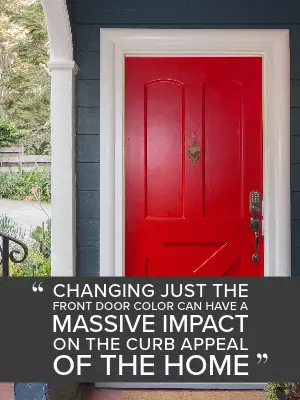
A job with a relatively low material cost could have a very high labor cost.
Often the risk factors involved are the primary reason why a professional’s estimate may seem to be higher than expected. Or if another contractor had a very low estimate, it may indicate something about the quality of their work. Understanding those concerns can also help you decide whether to employ a DIY approach to save on labor or hire a professional. However, it should be noted that “safety” and not “cost” should be the priority when determining who would be the best choice to perform those repairs.
In most cases where major repairs are not needed, a single topcoat that matches the existing colors should be all that is needed to freshen up its appearance.
If there is room in the budget, it would be good to speak with a home stager or experienced real estate agent about the colors that are popular or trending. You might consider changing the base color, the trim color, or both. Sometimes, just changing one of those colors can transform the entire house. In some cases, even changing just the front door color can have a massive impact on the curb appeal of the home.
When making color changes, two coats of paint (minimum) are preferred. It is best to use a similar or the same color as your primer. Many of the best primers available today can be tinted to match the color of your topcoat. Additionally, a professional painter may be able to suggest a paint and primer-in-one product (though two coats would still be needed) that has yielded good results locally.
A color change will cost more than just a single topcoat. Expect to pay about 50% to 80% more due to the extended time of application, and the additional material costs.
So, while these choices come down to your actual budget, it is good to be aware of your options and the reasoning behind a particular strategy.

IF THE GOAL IS TO CONTINUE LIVING IN THE HOME
In this scenario, the objective should be less money spent over time. This is achieved by regular maintenance, projecting ahead, and saving in advance for painting on a strategic schedule. In other words, don’t wait until it is falling apart or peeling to repair or paint your home. By taking this approach you will spend less money over time.
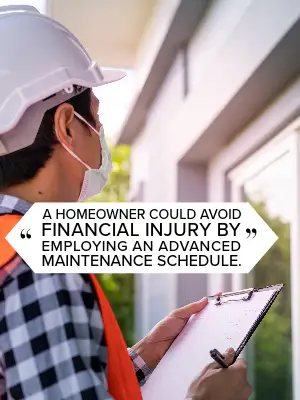
Exterior rotting of wood, holes, unsealed gaps, and the like – when left unchecked – can lead to other costly problems and expensive repairs. Water damage in particular can lead to serious mold growth and even foundational and structural damage. Repairs are like stitching a serious wound. Painting is like applying a bandage to keep the wound clean while the body heals. The result is that the risk of infection and serious health problems is averted by taking the time to properly address the wound.
With this illustration in mind, an even better approach would be to avoid injury in the first place by wearing personal protective equipment. A child on roller skates might wear a helmet, elbow, and knee pads, and gloves to prevent injury. In like manner, a homeowner could avoid financial injury by employing an advanced maintenance schedule. Your paint job is like a protective barrier that can shield your home from minor and even major damage.
So then, what would be a good painting schedule for homeowners living in San Antonio?
While the quality and color of the paint will affect its longevity, a range of 7-9 years seems to be the norm. Higher quality paints represent the higher end of those averages and even exceed 10 years at times. With lower-quality paints, darker colors will fade faster, sometimes within as little as 3-5 years.
With that information in mind, painting even a single coat of paint before signs of wear begin could extend those numbers an additional 5 years or more. So, if you painted your home 5 years ago and there are no signs of wear, then you should consider painting an additional coat on all exterior surfaces the following year. The idea is to trade off the lower cost of a topcoat with the higher cost of a full repaint, or the even higher cost of a full repaint and repair that came as a result of not acting soon enough.
Safety Considerations
The size of your home and the difficulty of reaching the various places needs to be analyzed. This will help determine if you will pay a professional painter or do it yourself. If you have a one-story home surrounded by flat ground and a relatively low pitch to your roof, then the DIY approach will no doubt save you money while posing very little safety risks.
What if the home has many hard-to-approach angles, steep or uneven surfaces surrounding the home, and 2 or more stories? Hiring professionals is the wiser, safer option. An insured professional painter has likely dealt with all manner of architecture and ground surfaces, has strategies in place to deal with each, and employs a team that can complete the job in less time.
And that is just the safety concerns.
The other factor is understanding how to properly prep the existing paint to be recoated. Each surface needs to be treated and prepped differently. Many variables can change how the project should proceed. There are simply not enough DIY videos in existence to possibly give you the lifetime’s worth of experience that a professional painter would need to assess and properly diagnose what technique would be required.
It’s true, that painting isn’t rocket science, but it also isn’t as simple as grabbing a brush and dipping it in paint. It is a skilled trade and that means that in addition to knowledge, it requires skill. If you do your research (which you should anyway because an informed customer will avoid wasting their money hiring the wrong contractor) you may have some of the knowledge needed, but you can’t fabricate the skill required.
CONCLUSION
Whether choosing to stay or sell, for some, the cost savings may be reason enough to go the DIY route. Or you’ve decided that the home only needs a few things painted before selling the home and you can handle it. In either case, we wish you success and hope that this article at least highlights to you the need to be safety conscious and take the time to prepare properly for your project.
For those of you who feel hiring a contractor may be the best way to proceed, Hendrick Painting will be happy to come and visit your property to access what is needed and provide you with an estimate for free. Feel free to contact us with any questions you may have. We enjoy educating our clients about all the details that go into doing the work that we love!


